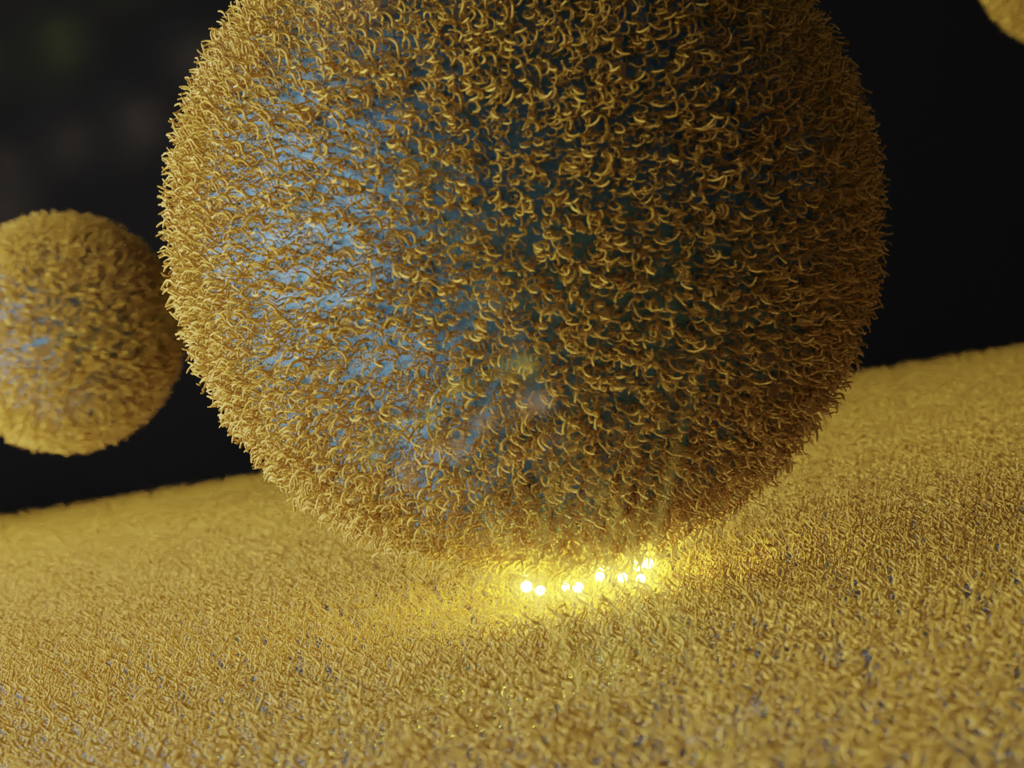MolecularControl
MolecularControl is a project funded by Horizon 2020 MCSA-IF under award number 839225. The project started in June 2020 and will end in May 2023. Updates and news on the project will be posted here.
Project Summary
Numerous biological processes harvest out-of-equilibrium forces for transport, sensing, signaling and more. For example, pumping of ions is performed within fluctuating pores that are believed to facilitate transport. The nature of these forces is extremely diverse, from electrical driving to thermodynamic or chemical driving. The ability to describe nonequilibrium states is critical to understand numerous biological processes but is extremely challenging as standard thermodynamic concepts fail. The MolecularControl project will investigate out-of-equilibrium systems relevant to health issues or sustainable energy. It plans to develop theoretical tools that can be widely applied, and transferred to other soft matter problems.
Project Results

Noise and transport in nanopores We started by investigating noise at equilibrium in a simple setting. In doing so we discovered that fractional noise (a subset of subdiffusive noise) is inherent in nanopores, for example when counting particles crossing the pore [1]. This phenomenon prevails as long as particles diffuse, and especially in 3D for ionic solutions [3]. We also wrote a review adressing methods and applications related to transport in nanopores [2]. In nanopores and nanochannels, hydrodynamics have peculiar effects on transport and can enhance transport [4].
[1] Intrinsic fractional noise in nanopores: The effect of reservoirs S. Marbach J. Chem. Phys. 154 (17), 171101
[2] Electroosmosis in nanopores: Computational methods and technological applications Electroosmosis in nanopores: Computational methods and technological applications A. Gubbiotti, M. Baldelli, G. Di Muccio, P. Malgaretti, S. Marbach, M. Chinappi Advances in Physics: X 7 (1), 2036638
[3] Ionic fluctuations in finite volumes: fractional noise and hyperuniformity M. T. Hoang Ngoc, B. Rotenberg, S. Marbach Faraday Discussions 2023
[4] Interactions enhance dispersion in fluctuating channels via emergent flows Y. Wang, D.S. Dean, S. Marbach, R. Zakine arXiv preprint 2305.04092

Adhesion and motion with multivalent ligand-receptors We rationalized the microscopic details of the interactions between DNA-coated surfaces [5]. Building on this knowledge it is possible to quantify equilibrium motion of a particle with multivalent ligands attaching to sticky receptors on a surface [6], and we predicted that this motion could be affected by inertia [7]. This opens up ways to control and improve assembly. Investigating these systems we also developed a robust coarse-graining approach to speed up simulations with such sticky motion [8].
[5] Comprehensive view of microscopic interactions between DNA-coated colloids F. Cui, S. Marbach, J. A. Zheng, M. Holmes-Cerfon, D. J. Pine Nature Comm. 13 (1), 1-10
[6] The Nanocaterpillar's Random Walk: Diffusion With Ligand-Receptor Contacts S. Marbach, J. A. Zheng, M. Holmes-Cerfon Soft Matter 18 (16), 3130-3146
[7] Mass Changes the Diffusion Coefficient of Particles with Ligand-Receptor Contacts in the Overdamped Limit S. Marbach, J. A. Zheng, M. Holmes-Cerfon Phys. Rev. Lett. 129 (4), 048003
[8] Coarse-grained dynamics of transiently bound fast linkers S. Marbach, C. E. Miles J. Chem. Phys 2023 12, e78100